Updating Einstein’s Universe and Magic Universe
What did Stephen Hawking discover?

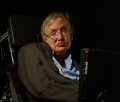
Stephen Hawking. Photo: Channel 4
We’re so used to it, we’re not surprised to see an elderly gentleman immobile in a wheelchair, his lips hardly moving, performing for most of this week as the host presenter of Channel 4 TV’s five-part history-of-science series “Genius of Britain”. Like the footballer David Beckham or the actress Joanna Lumley, the theoretical physicist Stephen Hawking is now a national treasure. And with his voice synthesiser he can seem like a visitor from outer space, setting us earthlings right about this and that.
But I’m irritated by the implication in the last programme, which I’ve just watched, that Hawking himself was a primary advocate of the Big Bang, in opposition to the great Fred Hoyle’s Steady State Theory. No mention of the l’atome primitif of the Belgian cosmologist Georges Lemaître in 1927, but he was a Catholic priest and perhaps inadmissible to Hawking’s co-presenter Richard Dawkins. No mention either of Martin Ryle, the Cambridge radio astronomer who first showed observational evidence that confounded Hoyle’s expectations.
Three decades ago, the BBC’s Alec Nisbett and I were the first to put Hawking on international television, in a two-hour blockbuster on particle physics, “The Key to the Universe”. At that time, his dreadful disease of nerve and muscle left his mumbles intelligible only those most familiar with him. We added a voice over, as if he were speaking a foreign language.
For Nisbett and me, Hawking was not only an up-and-coming physicist but an image of the frailty of Homo sapiens confronted by a confusing and often violent cosmos. After describing his then-recent suggestion that small black holes could explode, producing new particles, we incited Hawking to use stirring words to climax our show.
The Big Bang is like a black hole but on a much larger scale. By finding out how a black hole creates matter we may understand how the Big Bang created all the matter in the Universe. The singularity in the Big Bang seems to be a frontier beyond which we cannot go. Yet we can’t help asking what lies beyond the Big Bang. Why does the Universe exist at all?
My son Robert is always asking questions. Why this? Why that? Every child does. It is what raises us from being cavemen.
On one view, we are just weak, feeble creatures at the mercy of the forces of Nature. When we discover the laws that govern those forces we rise above them and become masters of the Universe.
Hawking then rose to stardom, taking up Newton’s chair as Lucasian Professor of Mathematics in Cambridge in 1979, and publishing the phenomenal best-seller A Brief History of Time in 1988. He has appeared frequently in “The Simpsons” as well as in scientific documentaries and docu-dramas. He made a sub-orbital spaceflight in 2007 at the age of 65 and during the weightless period he could move freely in his chair for the first time in four decades.
His courage, doggedness and success in the face of a crippling disease has been inspirational to paraplegics the world over. Concern for his predicament has also encouraged many people who might otherwise not have been interested in science to pay some attention to it.
In those respects I’m second to none in my admiration of Hawking. But we’re entitled to ask, as about any other scientist, what his enduring contribution to progress in research has been.
To try to get the tone right, I’ll begin by quoting an eminent but more reclusive theorist, Peter Higgs of Edinburgh, who saw the need for a particle that would give mass to matter, and how it might work. The race to find the Higgs particle, a.k.a the God particle, is now on, using the most powerful accelerators of our time.
But Higgs found himself in hot water during the Edinburgh Festival of 2002. He attended a dinner party celebrating a play based on the work of Paul Dirac, who predicted the existence of antimatter. It was not surprising that the conversation turned to why the public, who knew about Hawking, had never heard of the more important Dirac.
Thinking the dinner was private, Higgs commented about Hawking: “It is very difficult to engage him in discussion, and so he has got away with pronouncements that other people would not. His celebrity status gives him instant credibility that others do not have.”
Next morning Higgs found his remarks quoted in The Scotsman and repeated widely elsewhere. The shocked reaction confirmed Higgs’s point, that someone considered superlatively brilliant as well as handicapped was supposed to be exempt from the normal give and take with his fellow scientists.
Let’s check what I say about Hawking in Einstein’s Universe and Magic Universe and ask
- Is it fair?
- Does it need updating?
Read the rest of this entry »
 The most gratifying physics I’ve seen for a while comes in today’s Science magazine, from James Chin-Wen Chou and his colleagues in the Time and Frequency Division at the National Institute of Standards and Technology in Boulder, Colorado. They detect well-known effects of relativity on the rate of time passing, but now on the scale of ordinary human activities.
The most gratifying physics I’ve seen for a while comes in today’s Science magazine, from James Chin-Wen Chou and his colleagues in the Time and Frequency Division at the National Institute of Standards and Technology in Boulder, Colorado. They detect well-known effects of relativity on the rate of time passing, but now on the scale of ordinary human activities.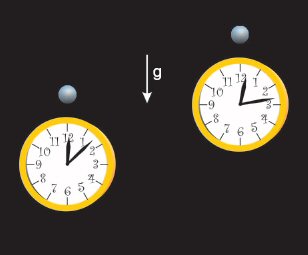



 Posted by calderup
Posted by calderup 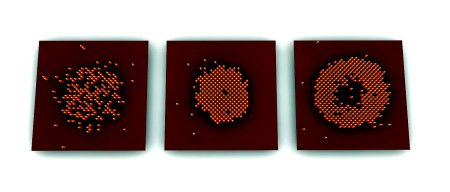







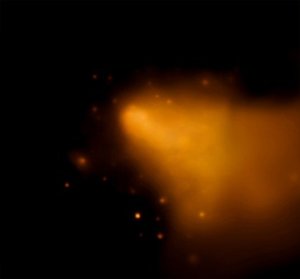

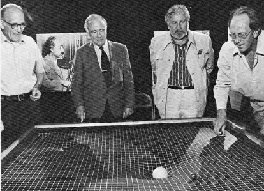



Briefly, some news
13/05/2011Climate Change News and Comments and a pending update for Einstein’s Universe and Magic Universe
1. CERN’s CLOUD experiment (testing Svensmarks’s cosmic-ray theory) shows a large enhancement of aerosol production and the results are due for release in 2 or 3 months’ time. See this Physics World interview with Jasper Kirkby, who is kind enough to recall a lecture I gave at CERN in 1997 outlining the Svensmark hypothesis. http://physicsworld.com/cws/article/multimedia/45950
2. Cambridge Conference on climate science and economic on 10 May 2011, where Svensmark’s contribution was well received. It’s also worth following the link in this report to the cartoons. http://blogs.telegraph.co.uk/news/jamesdelingpole/100087415/climate-change-an-emetic-fallacy/
3. Satellite test of General Relativity bears fruit after many, many years. http://einstein.stanford.edu/highlights/status1.html